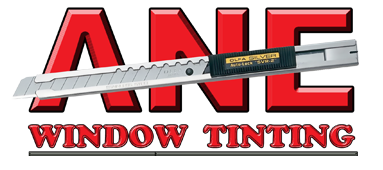Vehicular window tinting involves the application of a thin film of multi-layered polyester on the inside or outside of the windows. Inside application of the film is not exposed to the elements and is therefore more durable. Factory tints are incorporated between inside the glass and will maintain its integrity if the glass is intact. There are ceramic films that are the premium tinting material. They use nonconductive and nonmetallic ceramic particles that reduce solar heat up to 50% and help to tame interior temperatures. Normal tints can reflect from 35-45% of the heat, while the premiums tints kill from 75-80% of the heat transfer.
Reasons to Tint Car Windows
Long term exposure to ultraviolet (UV) light carries dangers and implications with damage to the skin and eyes. UV light will penetrate glass. Most tints are designed to filter out the UV radiation. About 30% of the UV will penetrate untreated glass, but most tints will filter out about 99% of the harmful radiation from the sun. The film also adds protection to the glass in accidents by not allowing fragmentation into flying shards of glass.
Window Tint Laws By State; West Virginia
State laws govern the tinting of glass. These measure the VLT or visual light transmission percentage. In West Virginia we have:
Sedan Car Window Tinting:
• Windshield: Non-reflective tint is allowed on the top 5 inches of the windshield.
• Front Side Windows: Must allow more than 35% of the light in.
• Back Side Windows: Must allow more than 35% of the light in.
• Rear Window: Must allow more that 35% of the light in.
What Tint is Legal for a SUVs & Vans?:
• Windshield: Non-reflective tint is allowed on the top 5 inches of the winshield.
• Front Side Windows: Must allow more than 35% of the light in.
• Back Windows: Any darkness can be used.
• Rear Window: Any darkness can be used.
Legal Specs for Reflective Vehicle Window Tint
The specs for reflection in the State of West Virginia are as follows of all side windows on vans, SUVs and sedan side window is limited to 20% reflectivity. Further dual side mirrors are required if any window behind the driver is tinted. Yellow, amber and red window tint is not allowed. Ask the tint dealer if the tint is certified in West Virginia. It must be certified. A sticker to identify legal tinting is required between the film and the glass on each tinted window. There are special medical exemptions for special tint. Any penalties are a misdemeanor with a $200 fine.
How to Tint Automobile Windows
The glass is first cleaned thoroughly and wiped down. Generally, the cleaning process is repeated twice as nay imperfections will result in having to start the process over. The film is cut oversize to ensure 100% coverage then trimmed to fit. All air bubbles are removed using a special squeegee. Perfection is Key.
What to Do After Tinting Car Windows
Give your window a full week before cleaning them after the application of the tint. Keep side windows up during this curing period. The it is given to set the better. Do not use ammonia-based window cleaners and use a soft cloth. No streak foam cleaners are preferable.
Residential, Commercial & Automotive Window Tinting & More in Martinsburg, WV, Round Hill, VA, Gaithersburg, Maryland, Greater Eastern Panhandle Areas including Berkeley & Jefferson Counties, West Virginia
Most of the limitations are there for law enforcement to see if the driver is complying with seat belt, no texting or cell phone laws. Officer and pedestrian safety is an important issue as well. Pedestrians should make eye contact with drivers before committing to the street. Also, in low light conditions heavily, tinted windshields can be dangerous. Call ANE Window Tinting for all your window tinting needs!




